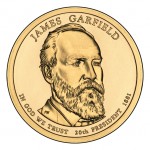 Kinderhook, New York … Moravia, New York … Greeneville, Tennessee … Fremont, Ohio.
Kinderhook, New York … Moravia, New York … Greeneville, Tennessee … Fremont, Ohio.
These are among the locations where the United States Mint has sought to “connect America through coins” in recent years. All have served as sites for official launch ceremonies at which the Mint has introduced new entries in its series of presidential $1 coins.
Typically, the Mint has spent about $10,000 apiece to stage these ceremonies in towns where former presidents were born or had some other important tie. This money has covered the costs of sending Mint officials to conduct the coin launches, preparing and distributing press kits and giving new $1 coins to youngsters in attendance.
Evidently, the Mint has viewed this as money well spent, since it has enthusiastically described the launch ceremonies as an “exceptional form of outreach to a wide base of individuals.”
That outreach seems to have ended: The Mint announced recently that it will dispense with such ceremonies for future presidential $1 coins.
The decision makes a certain amount of sense, since there are no plans to strike the rest of the coins for circulation. Instead, the second half of the series—starting with the 2012 coin for President Chester Arthur—will be made exclusively for sale to collectors at prices above face value. The remaining presidential dollars will be non-circulating legal tender (NCLT) coins.
What doesn’t make sense is the federal government’s previous decision to stop producing the dollars as circulating coins. And what ultimately makes the least sense is the original vote by Congress to create the program in the first place.
I vividly recall a phone conversation I had in 2005 with Jay Johnson, who had served as Mint director under President Bill Clinton. Jay was about to testify before a congressional committee about then-pending legislation to authorize the presidential dollars, and he called to seek my input. I told him the same thing that I—and many others—had been saying all along: that no $1 coins, or series of $1 coins, would ever achieve meaningful circulation unless and until the government stopped issuing $1 bills.
Congress had no stomach for this necessary step, reasoning correctly that dropping paper dollars would trigger howls of protest from constituents. It authorized the $1 coins in December 2005 without provision for retiring dollar bills, thereby all but ensuring the premature death of the series at the very same time it was giving birth to the program.
By December 2011, with the vast majority of the presidential dollars taking up costly space in government storage, the Obama Administration had no second thoughts about eliminating the program, at least as part of the nation’s everyday commerce. It viewed the move, in fact, as a painless way to demonstrate its zealousness in cutting government waste.
On closer examination, though, the action resulted in plenty of negatives, too. First, it forced collectors forming complete sets to purchase the remaining coins at sizable markups, rather than obtaining them at face value from their banks.
Then, too, the second half of the series will honor some of the most popular U.S.presidents, including Theodore Roosevelt, Franklin D. Roosevelt, Dwight D. Eisenhower, John F. Kennedy, Ronald Reagan and Bill Clinton. Demand for these presidents’ coins figures to be much stronger than it was for lesser-known 19th-century chief executives. That could jump-start interest in the series as a whole—if the series had not effectively been halved. There are downsides for the Mint, as well. For more than 30 years, the Mint has been touting the potential benefits of “mini-dollar” coins. In 2010, the Government Accountability Office estimated that complete replacement of dollar bills with longer-lasting dollar coins would yield savings totaling $5.6 billion over a 30-year period.
And what about the role the coins are supposed to be playing in educating Americans, especially young people, about their nation’s history? That connection appears to have been lost somewhere between Kinderhook, Moravia and Washington, D.C.











